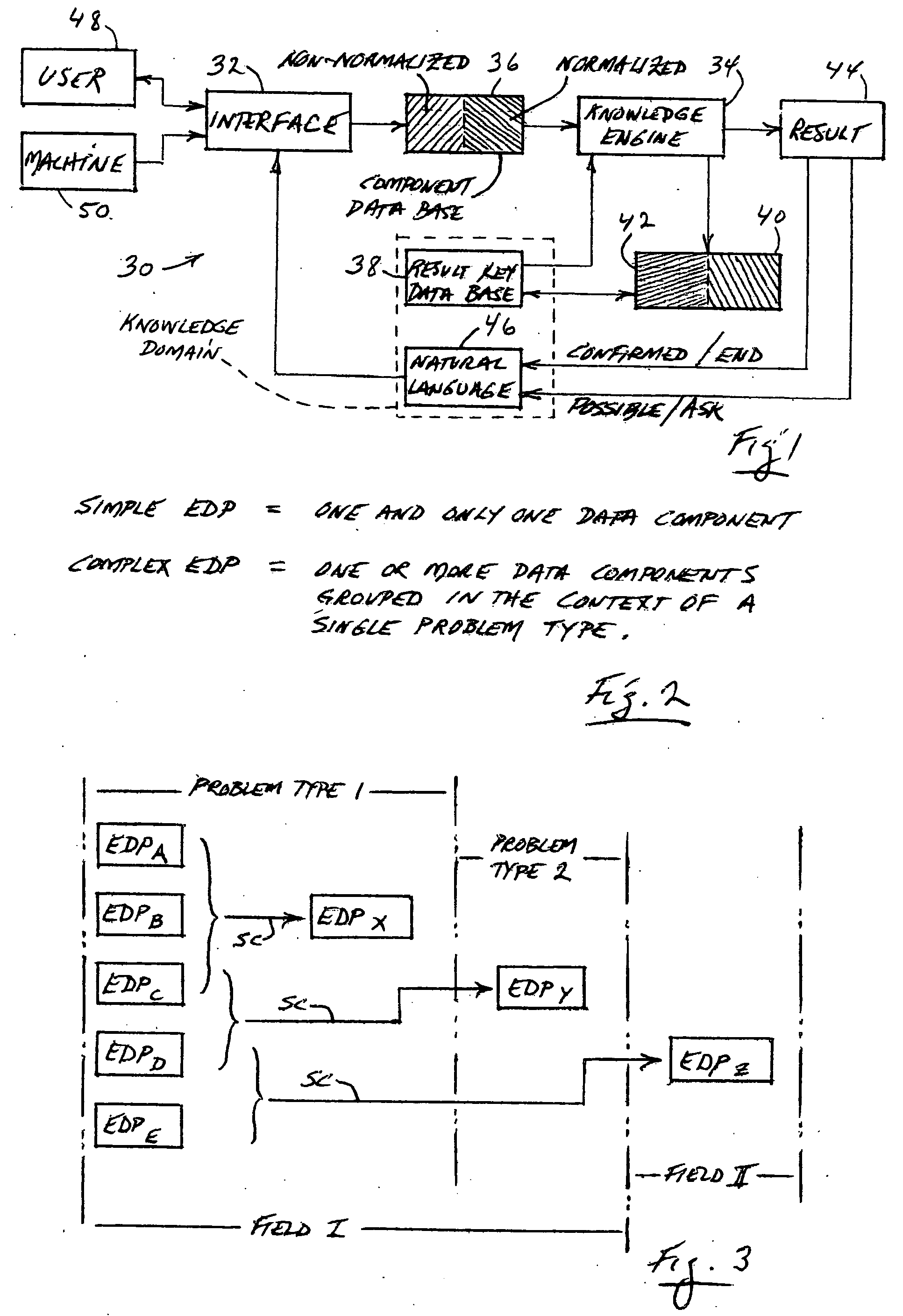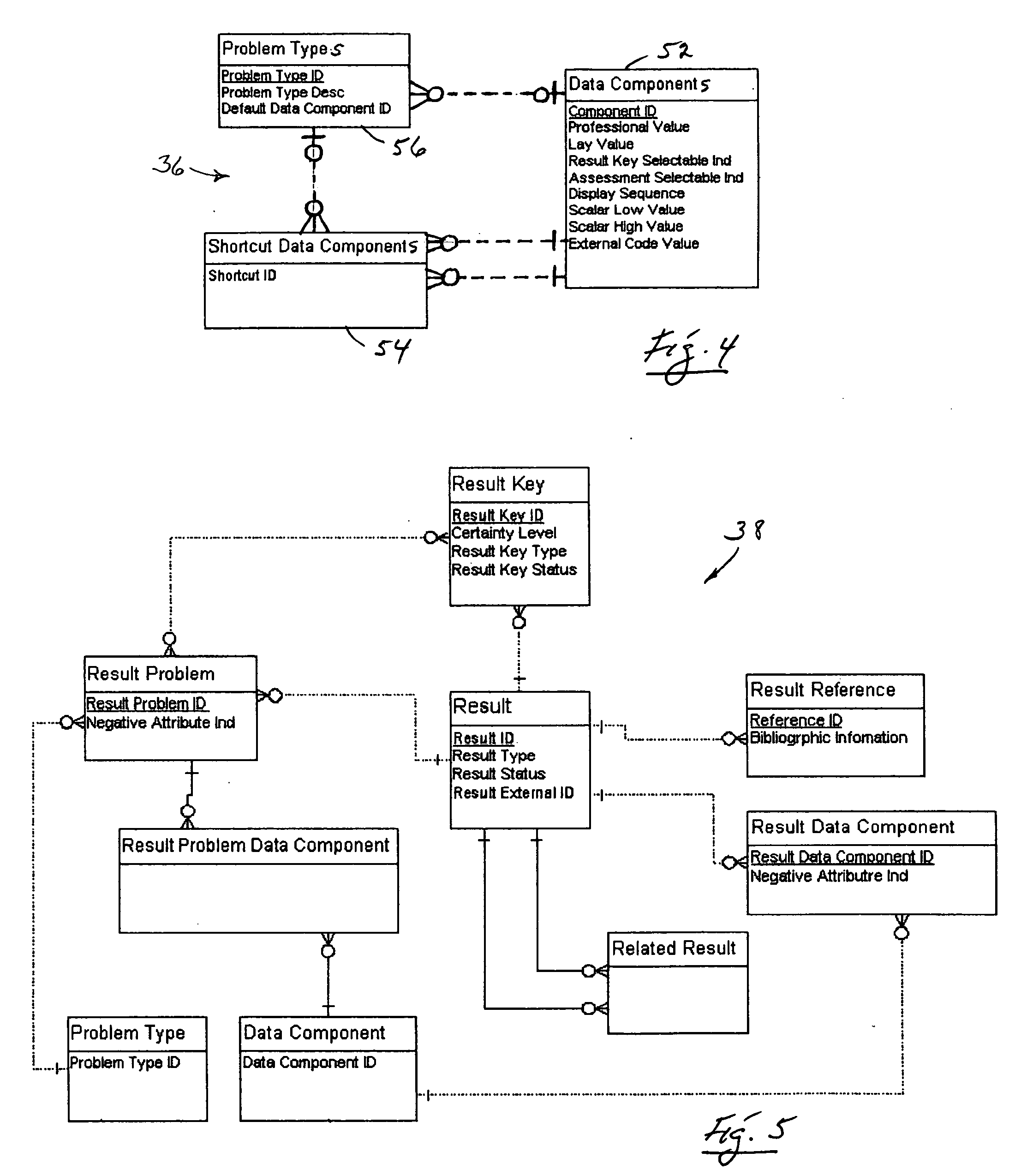Computer-based intelligence method and apparatus for assessing selected subject-area problems and situations
a computer-based intelligence and subject-area technology, applied in computing, instruments, electric digital data processing, etc., can solve the problems of significant overhaul of the system, limited the possible outcomes of assessment behavior, and general limitations of conventional artificial intelligence machines and methods, so as to enhance the performance of the structure and methodology, and achieve the effect of remarkable efficiency
- Summary
- Abstract
- Description
- Claims
- Application Information
AI Technical Summary
Benefits of technology
Problems solved by technology
Method used
Image
Examples
Embodiment Construction
[0041] As is generally set forth above, FIGS. 1-11, inclusive, in the drawings describe underpinning fundamentals of the present invention which are also disclosed in the mentioned predecessor patent application and upon, and combined with, which, fundamental enhancing improvements have been made to complete the content of this invention. Description begins with discussion relating more specifically, therefore, to these eleven drawing figures.
[0042] Accordingly, and referring first of all to FIG. 1, indicated generally at 30 is a computer-based knowledge system (and methodology) which is (are) constructed and organized in accordance with the present invention to perform Assessments regarding problems and / or situations that relate to a particular defined field, or domain, of knowledge. As was mentioned earlier herein, system and methodology 30 will now be described in relation to the knowledge domain of medicine, though it should clearly be understood that the general structures of ...
PUM
 Login to View More
Login to View More Abstract
Description
Claims
Application Information
 Login to View More
Login to View More - R&D
- Intellectual Property
- Life Sciences
- Materials
- Tech Scout
- Unparalleled Data Quality
- Higher Quality Content
- 60% Fewer Hallucinations
Browse by: Latest US Patents, China's latest patents, Technical Efficacy Thesaurus, Application Domain, Technology Topic, Popular Technical Reports.
© 2025 PatSnap. All rights reserved.Legal|Privacy policy|Modern Slavery Act Transparency Statement|Sitemap|About US| Contact US: help@patsnap.com



